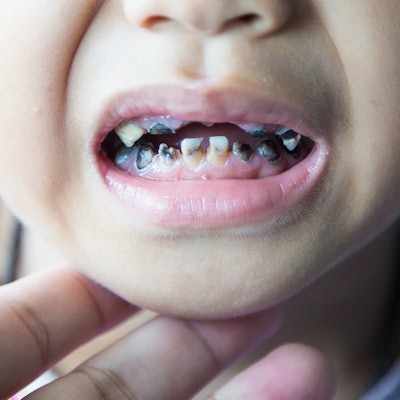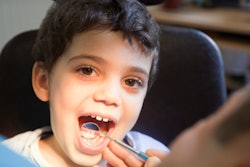
Treating the molars of young children with sealant enables them to stay caries-free longer, while potentially saving the U.S. health system an estimated $149 million per year, according to a study published in the October issue of the Journal of the American Dental Association.
Due to the cost savings and caries prevention associated with pit-and-fissure sealant (PFS) treatment, policymakers should consider paying for the treatment in children who are at high risk of developing cavities, the authors wrote.
"To achieve long-term cost savings, Medicaid and private dental insurance plans should include primary molar PFS treatment as a benefit," wrote the group, led by Dr. Yara Halasa-Rappel, PhD, senior project director at Commonwealth Medicine, University of Massachusetts Medical School, in Shrewsbury (JADA, October 2021, Vol. 152:10, pp. 832-841).
A costly, preventable problem
Worldwide, early childhood caries (ECC) is one of the most common preventable chronic diseases among children. Approximately 21% of children in the U.S. ages 2 to 5 years have caries, and minorities and low-income children are most affected, according to the National Center for Health Statistics.
Furthermore, 59% of children in the U.S. ages 2 to 5 are at high risk of caries, and 87% of these kids are covered by Medicaid or the State Children's Health Insurance Program (SCHIP). Approximately 57 million molars in U.S. preschoolers could benefit from pit-and-fissure sealant, according to the authors; however, most state Medicaid programs fail to reimburse dentists for this treatment.
Dental costs exceeded $1.55 billion for all children younger than 5 years in a 2010 survey of medical expenditures in the U.S. Supporting incentives to encourage the prevention of dental disease in children could mitigate these costs, the authors wrote.
In the current study, the authors examined the cost-effectiveness of light-polymerized resin-based fluoride sealants on primary molars in children younger than 6 who were at high risk of caries. Halasa-Rappel and colleagues compared sealed and unsealed teeth that were treated in outpatient clinics or operating rooms.
Using a regression model, the authors estimated the probability of caries development in 1,884 primary molars followed over a five-year period. They looked at chart data from April 2009 through September 2013 collected from the dental department at Boston Children's Hospital. The group utilized a decision-support model to estimate the incremental cost-effectiveness ratio using a 3% discount rate to adjust future cost and outcomes to present value.
Over a five-year period, the cost of care for a child with unsealed molars was $90. For sealed molars, the cost was $75. Children with unsealed molars did not develop caries in those teeth for 4.32 years. However, those with sealed molars remained caries-free for 4.85 years, the authors wrote.
Pit-and-fissure sealant treatment led to a savings of $25 for each caries-free year gained, resulting in overall savings of $742 million for the dental health system in the U.S. over the five-year period. Annually, the savings would be approximately $149 million, according to the group.
The study had several limitations; for example, the results may not be generalizable to children who are at low or moderate risk of tooth decay. However, though outcomes may vary for children at moderate or low caries risk, the findings potentially offer insight for the most vulnerable population, the authors noted.
Benefits beyond savings
The use of sealants may also defer restorative treatment in these young children. This could avoid the need for care under sedation or general anesthesia, which would reduce the associated medical risk and cost of treatment, the group wrote.
"These observations highlight the important role of PFS treatment in populations most vulnerable to ECC," Halasa-Rappel and colleagues concluded.




















